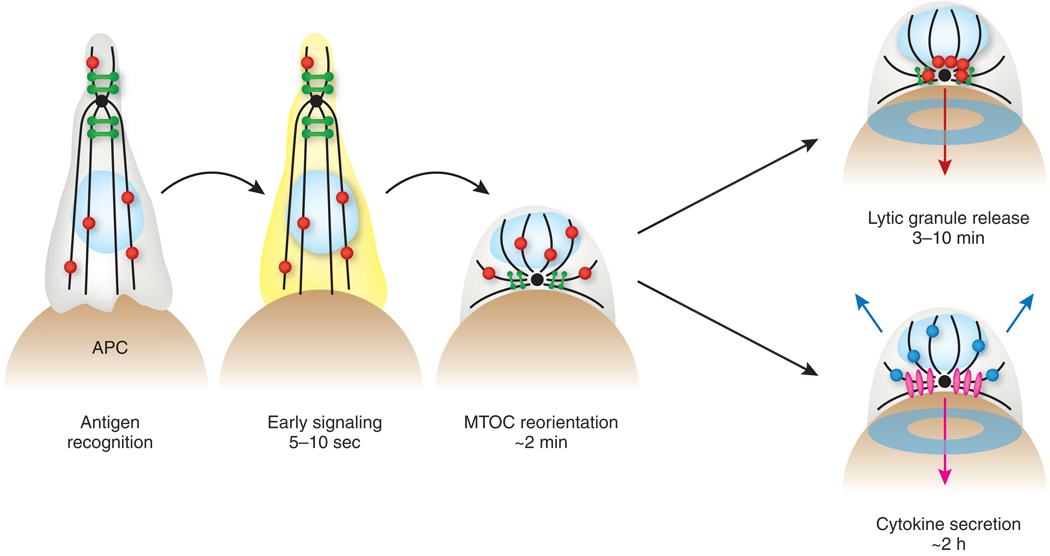Figure 1.
The time course of T cell secretory responses. Antigen recognition triggers early signaling responses within 10 seconds, followed by MTOC reorientation, synapse formation and the release of lytic granules (for cytolytic cells) in less than 10 min (refs. 2,21,60). Cytokine secretion typically occurs hours after initial antigen recognition23. Beige, APC; gray, T cell; light blue oval, T cell nucleus; black lines, microtubules; black dots, MTOC; green, Golgi apparatus; red, lytic granules; pink and blue, cytokine-containing compartments destined for synaptic and multidirectional secretion, respectively; yellow cytoplasm, early signaling responses; turquoise ring, IS formation. Arrows indicate the directionality of secretion. Although lytic granule release is separated from cytokine secretion here, we do not mean to suggest that T cells exclusively either kill or secrete cytokines. Indeed, CTLs execute both of these effector functions in many conditions.

